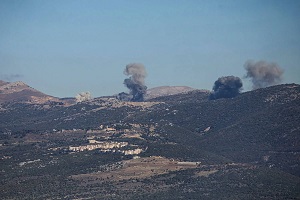Jordan remains second largest refugee host globally — UNHCR

The Jordan Times
AMMAN — Jordan remains the second largest refugee host per capita worldwide with roughly 750,000 refugees, of 57 different nationalities, according to a UNHCR report released in June.
As of June, the demographics of refugees in Jordan consisted of 660,000 Syrian refugees, close to 70,000 Iraqi refugees, 15,000 Yemeni refugees, 6,000 Sudanese refugees, 800 Somalian refugees and roughly 2,000 refugees of other nationalities, according to the UNHCR report.
Preceded by Lebanon, where one in six individuals is a refugee, in Jordan, one out of every 14 individuals is a refugee, followed by Turkey where one out of every 22 people is a refugee, according to the UNHCR 2018 Global Trends report.
Over 50 per cent of the 660,000 Syrian refugees registered in Jordan are under the age of 17, 46 per cent are between the ages of 18 and 59, 8.5 per cent struggle with a serious medical condition, and most come from Homs and Daraa regions in Syria, according to data released by the UNHCR in July.
As of July, the majority of the registered Syrian refugees, 400,000, arrived in Jordan between the years of 2012 and 2013, with 30 per cent of Syrian refugees living in Amman, 13 per cent in Mafraq, 20 per cent in Irbid and 11 per cent in Zataari refugee camp, according to the data.
Of the 67,000 Iraqi refugees registered in Jordan, only 30 per cent are under the age of 17, whereas 58 per cent are between the ages of 18 and 59 with 11 per cent of Iraqi refugees being older than 60, according to the UNHCR data.
According to the 2018 Jordan Comprehensive Food Security and Vulnerability Assessment, Iraqi refugees have some of the highest education levels among non-Syrian refugees in Jordan, with 57 per cent of heads of case having completed secondary or university, while Iraqi refugees also have the highest proportion of cases of people who struggle with a disability in the assessment.
Most Iraqi refugees, 32,000, arrived in Jordan between 2014 and 2016, according to the data, and 50 per cent of Iraqi refugees living in Jordan originally came from Baghdad with close to 90 per cent of Iraqi refugees currently residing in Amman.
Of registered refugees and asylum seekers in Jordan who are not from Iraq or Syria, by far the majority, 74 per cent, are between the ages of 18 and 59 with only 22 per cent below the ages of 17 and only 3.5 per cent above the age of 60, according to the UNHCR.
Most refugees who are not from Syria or Iraq are from Yemen, 63 per cent, while 26 per cent are from Sudan, 3.3 per cent are from Somalia and 7 per cent are from other countries including Algeria, Libya and Ethiopia, according to the UNHCR.
Among non-Syrian refugees, the average total monthly per capita expenditure are below the national poverty line of JD68 per person per month, 43 per cent of which was spent on food in 2018, according to the 2018 Jordan Comprehensive Food Security and Vulnerability Assessment.
Food security is a significant issue for people in these demographics with many spending less on maintaining their health and education, with Somali and Sudanese refugees struggling the most in terms of accessing adequate nutrition, according to the assessment.
Most non-Syrian or Iraqi refugees arrived in Jordan in the last two years, with 33 per cent arriving between 2017 and 2018, and 79 per cent currently living in Amman, according to the data.
Among these demographics, 16 per cent are individuals with specific needs and 10 per cent have serious medical conditions, according to the data.




